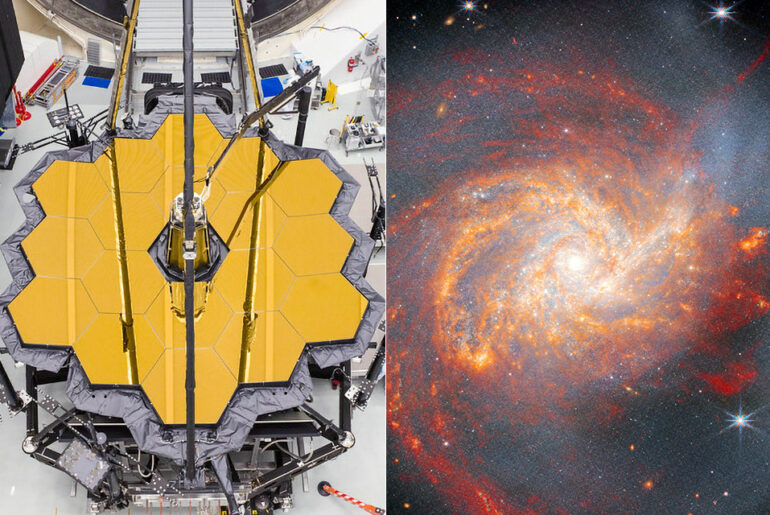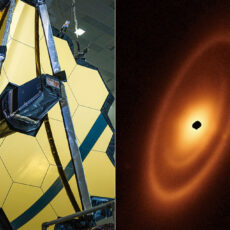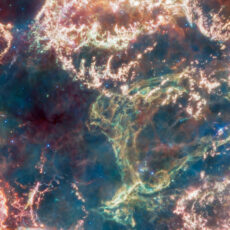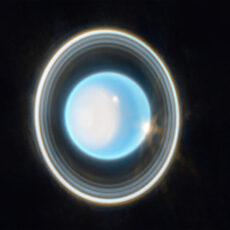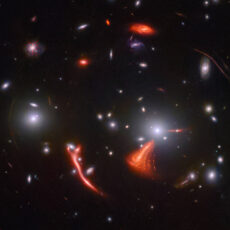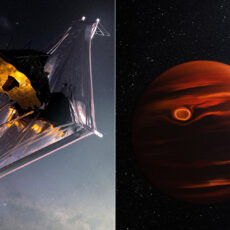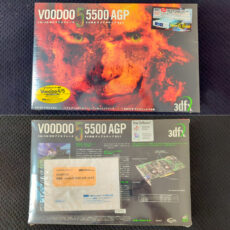
NASA / ESA’s James Webb Space Telescope captured a fiery image of galaxy NGC 3256 located 120 million light-years from Earth in the constellation Vela, and is a resident of the Hydra-Centaurus Supercluster. Its tightly entwined spiral arms set in a hazy cloud of light conceals the aftermath of an ancient cosmic clash between two equally massive spiral galaxies. Astronomers estimate this clash of titans to have occurred around 500 million years ago.

The long tendrils you see consist of shining dust and stars that extend outwards from the main body of the galaxy, while the reddish orange regions spread across contain young stars created in the merger that are irradiating small dust grains. If you look further out, there are extended tidal features, which are mainly stars being pulled out of the galaxies when they collided.
- POWERFUL TELESCOPE FOR BEGINNERS: The AstroMaster 70AZ is the perfect entry-level telescope for adults and kids eager to explore the night sky. You...
- HIGH-QUALITY 70MM OPTICS: Enjoy crisp, detailed views through the fully coated 70mm (2.8") achromatic refractor — perfect for observing the Moon,...
- VERSATILE DAY & NIGHT USE: Designed for both astronomical and land-based viewing, the AstroMaster 70AZ lets you explore the stars at night and enjoy...
The galactic collision that created NGC 3256 triggered a luminous burst of star formation that can be seen in the brightest portions of this image. These infant stars shine most brightly at infrared wavelengths, light which can penetrate through obscuring dust in the galaxy, and which makes the stars perfect subjects for Webb,” said the European Space Agency.

